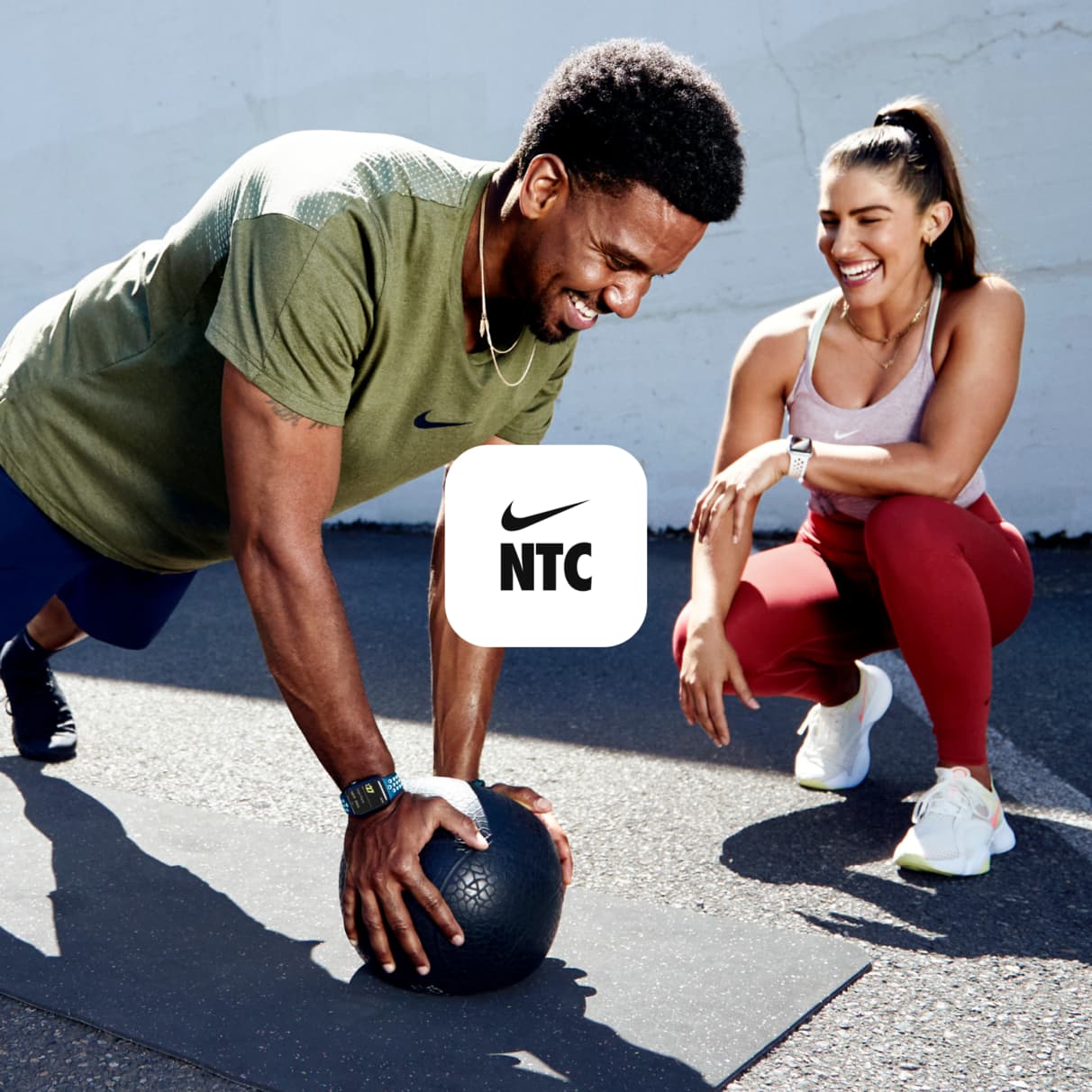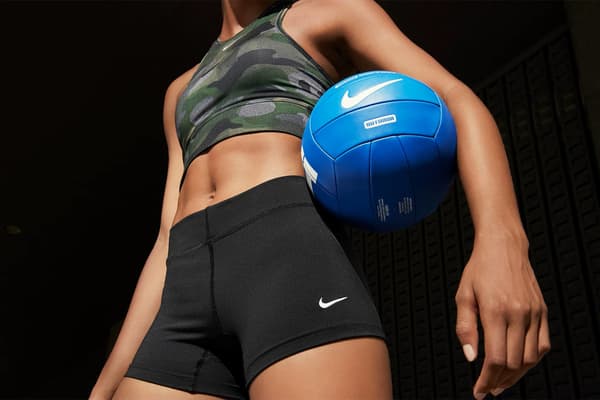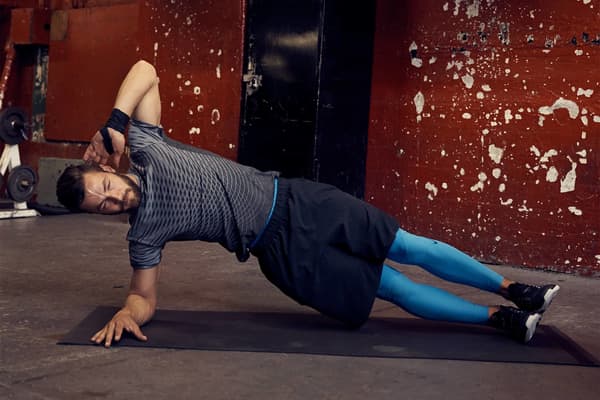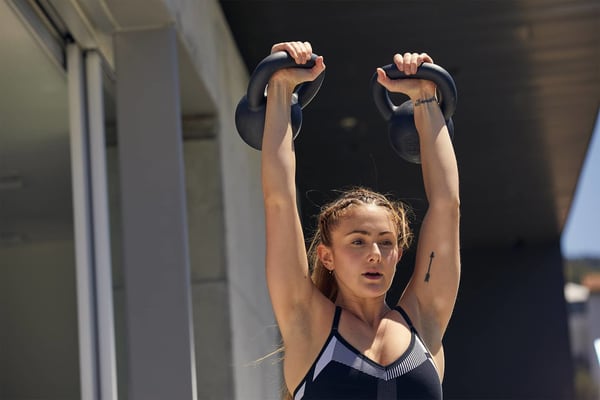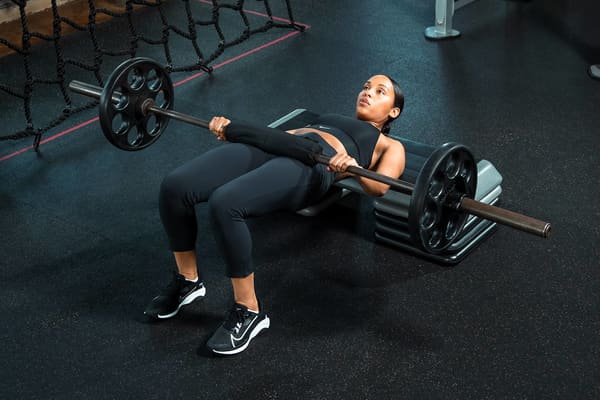Your Guide to the Muscles in Your Back—And How To Exercise Them
Sport & Activity
A strong back keeps your posture in check, improves sport performance and can prevent pain and injuries.

You may not be able to see your back muscles without a mirror or camera, but they're always looking out for you. They're there to hold you up, brace against force and support your arms through movement.
But to do all of that, your back muscles need something from you in return: attention. Specifically, attention in the gym or in your dedicated workout space at home. By doing exercises to strengthen your back muscles, you can help your back help you. (Related: 3 Dumbbell Back Workouts To Include In Your Workout, According To Personal Trainers)
Before reviewing various ways to strengthen your back muscles, it's useful to be familiar with basic back muscle anatomy.
Introduction to Back Muscles
The muscles in your back are a group of postural muscles in the body. These muscles are always "on" to stabilise your spine. Essentially, they hold you up against the forces of gravity, said William Kelley, DPT, ATC, CSCS and owner of Aries Physical Therapy in South Florida. They also help to move your arms and trunk in different directions.
Here are some of the key back muscles:
- Latissimus dorsi. More commonly referred to as "the lats", these two triangle-shaped muscles take up most of the space in your back. They span from the upper arm (humerus) down to the pelvis and across the ribs. Their main function is to internally rotate, extend and bring the arm towards the midline of the body (also known as adduction), said Jennifer Novak, MS, CSCS, owner of PEAK Symmetry Performance Strategies in Atlanta, Ga. As such, the lats are heavily involved in exercises like pull-ups and lat pull-downs, and activities like rowing and swimming.
- Trapezius. The trapezius, or "traps", are another pair of triangle-shaped muscles in your back. They start at the base of your neck, extend across your shoulders, and run down to the middle of your back. The traps allow you to lift and rotate your head, bring your shoulder blades in and down when maintaining upright posture, and twist your torso, noted the Cleveland Clinic. You'll work these muscles when you perform rows, pull-ups, shrugs and lat pull-downs.
- Rhomboids. The rhomboids are two separate muscles in the upper back: the rhomboid major and the rhomboid minor. They sit beneath the traps and run from the spine to the edge of the shoulder blade. These muscles pull the shoulder blades towards your midline, as when doing a bent-over row, Novak said. The rhomboids also kick in during exercises like a reverse fly and face pull (this involves pulling weight towards your forehead with a suspension trainer, resistance band or cable pulley while keeping your elbows high).
- Intrinsics. Muscles that sit a bit deeper and support your spine are collectively known as intrinsic back muscles. They include the splenius capitis, interspinales, intertransversarii, spinal erectors, semispinalis, multifidi and rotatores. These intrinsics are primarily responsible for stabilising the spine when sitting or standing still and whenever you move a limb, Kelley said. Secondarily, intrinsics help the spine to extend, flex, rotate and resist movement, he said. Because intrinsics help in most movements, you'll work them any time you do functional movements like deadlifts and rows. However, you can also target them by balancing on an unstable surface (such as a Bosu ball), Novak said.
- Levator scapulae. These muscles sit along opposite sides of the neck. Their primary function is to rotate the shoulder blades (scapulae) downwards, "an action that opposes the lower traps, which rotate it upwards", Novak said. They'll activate during shoulder exercises like straight-arm pulldowns and shrugs, and activities like rowing and swimming, she said.
3 Benefits of a Strong Back
1.Improved Posture
Your back muscles play a starring role in holding your torso upright. In fact, they work practically 24/7 to help you resist gravity.
If your back muscles are weak, they won't be able to optimally support and stabilise your spine. Chances are your body will cope with this weakness by compromising good posture. Your shoulders will slump forwards and your lower back can round, leading to stiffness and pain over time. "Think of your body collapsing into itself at its central point because it isn't strong enough to hold up against it", Kelley said.
But the stronger these muscles are, the better they'll be able to hold you up. And the better they can support you, the more stable your spine will be, "regardless of the position you put it in", Kelley said.
2.Injury Prevention
"We do many things in our daily life, in fitness, and in sport that require us to transfer force from the legs, through the back, to the upper body and vice versa", Kelley said.
Picking up a heavy object is a perfect example. If your back muscles are too weak to transfer and receive force through your legs to hoist that hefty object off the floor, you can end up with pain or injury. Sturdy back muscles, on the other hand, can better handle that force transfer.
3.Better Performance
Strong back muscles pay dividends in the gym and on the playing field. "From a performance standpoint, the stronger the back muscles, the more safely and effectively you can perform", Kelley said.
A well-built back will lead to more powerful lifts, tackles, throws, jumps and anything else you may be called upon to do. And for athletes in back-heavy sports such as rowing, swimming, golf, tennis, powerlifting and cycling, a sturdy posterior is essential for generating movement and staving off injury.
RELATED: 11 Tips on Proper Gym Etiquette, According to Trainers
How to Exercise Your Back Muscles
1.Pick Up Heavy Weights
The best way to train your back muscles is through compound (multi-joint) lifts that involve picking up heavy weights. Think deadlifts, cleans, snatches and jerks. However, if you're new to these types of movements, be sure to work with a personal trainer or related expert to learn proper technique and starter moves to gear up for these more complex exercises.
When you pick up a heavy object, your back muscles have to work overtime to stabilise your shoulders and trunk so your legs can transmit power through the object, Kelley said.
To see this in action, try a deadlift. Deadlifts are often performed with a barbell and weight plates. However, you can use kettlebells, dumbbells or a resistance band. Whatever equipment you choose, you'll want to first learn how to do a deadlift using bodyweight and light weights before graduating to heavy ones.
Here's how to do a deadlift with a barbell:
- First, check that the weight plates are secured with barbell collars or clamps.
- Stand with feet hip-width apart with the barbell on the floor near your shins, toes under the bar.
- Keep your spine long and shoulders long as you push your hips back and down. Grip the bar with an overhand grip (palms facing the floor). Your hips should be lower than your shoulders, and your gaze on the ground about 60cm in front of the bar.
- Brace your core, press your feet into the ground and take a deep breath in through your diaphragm to prepare. Hold that breath and, acting as though you're about to forcefully exhale, lift the bar using your hips, glutes and leg muscles. Don't exhale just yet. You should end the movement standing upright with chest open, shoulders back and gaze straight ahead.
- Slowly exhale as you reverse the movement to lower the bar to the floor in a straight line. Keep the bar close to your body, but avoid snaking it around your knees.
2.Isolate
Supplement big lifts with more isolated back exercises such as rows, pulls, shrugs, extensions and rotations. Performing a variety of movements ensures you utilise the back muscles in different combinations and patterns, Kelley said. This will help you build a strong, well-rounded back.
Stellar back exercises include:
- Bent-over rows
- Lat pull-downs
- Shoulder shrugs
- Pull-ups
- Supermans
- Seated rows
3.Do Anti-Movements
"The other way to isolate your back muscles is with exercises that require the core and back to resist motion", Kelley said. These are known as anti-movements, and they fall under a few different categories: anti-rotation, anti-flexion, anti-extension, and anti-side-bending (anti-lateral flexion). Examples include the Pallof press (anti-rotation), plank (anti-extension), back extension (anti-flexion) and side plank (anti-side flexion).
Anti-movements teach your core and back muscles to stabilise so they don't move when force is applied. Having plenty of strength to resist motion helps to protect your spine during everyday activities and sports, Kelley said.
Words by Lauren Bedosky
